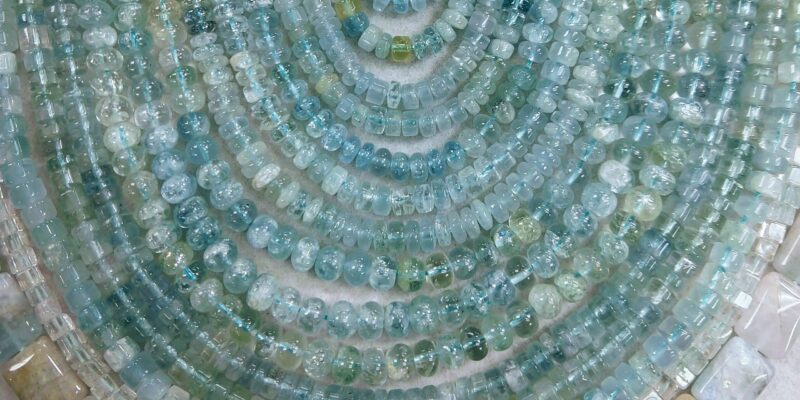
March ~ the Month of Aquamarine and Bloodstone
Leave your thoughts2 Birth Stones for March
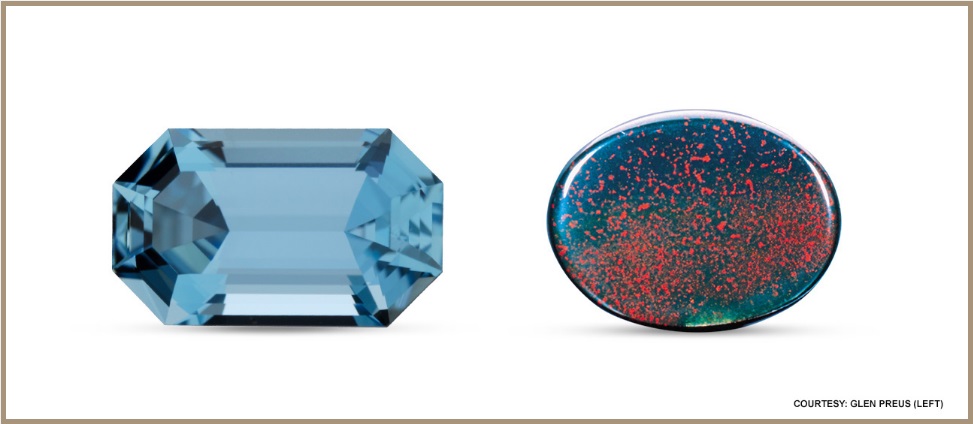
Aquamarine and bloodstone, March’s birthstones, are very different in appearance, but they share a similar reputation for protecting one’s well-being. The aquamarine birthstone evokes the colors of the sea. From deep green-blue to light, slightly greenish blue hues, faceted aquamarines are often free from inclusions and as clear as water, symbolizing purity of spirit and soul. The bloodstone birthstone is typically a dark-green cabochon that contains red spots of iron oxide, the “blood” that brings health and strength to the wearer.
BLOODSTONE BIRTHSTONE MEANING & HISTORY
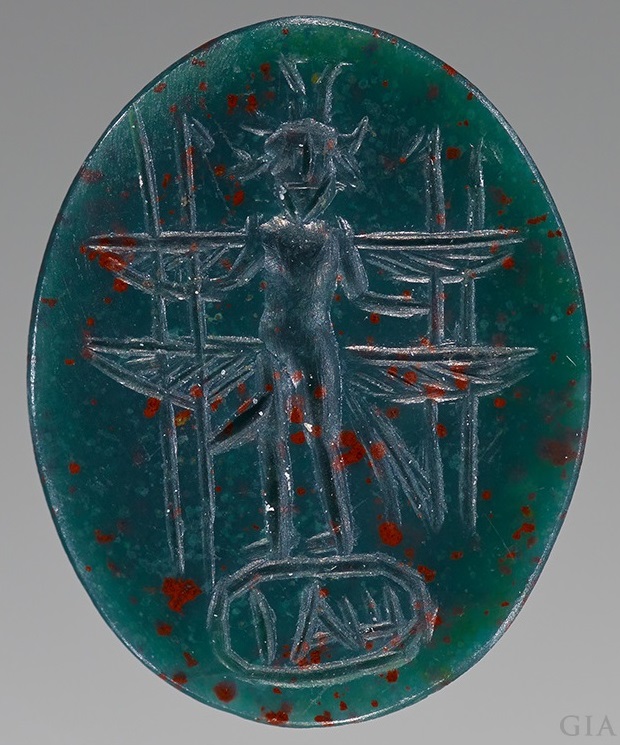
Bloodstone, also known as heliotrope, is a variety of chalcedony (cryptocrystalline quartz) that is traditionally semi-translucent to opaque dark green jasper with red inclusions of iron oxides, especially hematite. Bloodstone’s alternate name heliotrope comes from the ancient Greek word that means “to turn the sun”. In ancient times, these March birthstones were believed to turn the sun red if they were placed in water.
Several metaphysical properties have been attributed to this March birthstone, including increasing strength, giving invisibility, and preserving health and youth. In modern times, many believe the bloodstone birthstone to be a lucky charm, as it is prized by athletes and others who want to grow their strength.
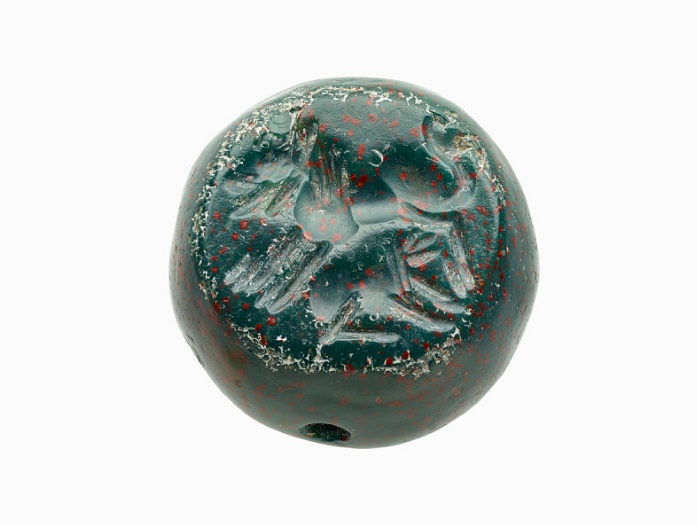
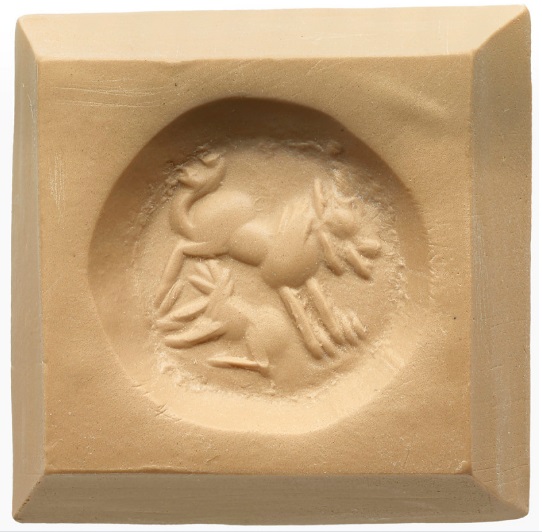
ORIGIN
Most bloodstone in the marketplace today is from India. However, the bloodstone birthstone also comes from parts of Brazil, Australia, China and the United States, among other countries. Bloodstone can be found filling fractures or cavities in other rocks or as pebbles in riverbeds.
Bloodstone has a Mohs hardness of 6.5 – 7. It can be easily cleaned at home with warm soapy water and a soft brush. Storage in a soft cloth is recommended.
AQUAMARINE BIRTHSTONE MEANING & HISTORY
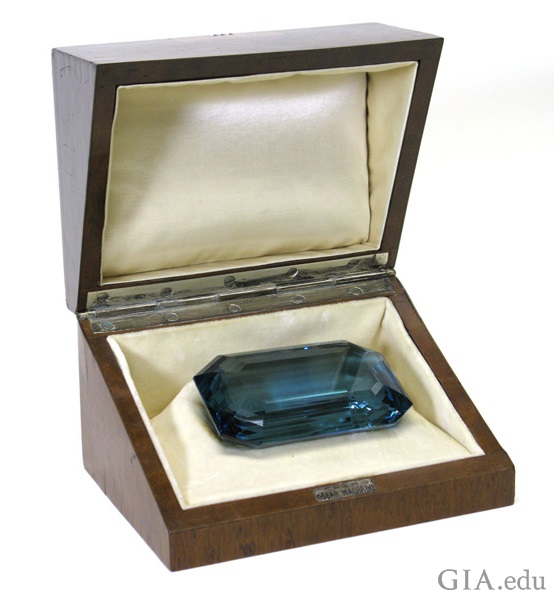
Aquamarine’s name comes from the Latin for seawater, and ancient mariners claimed the gem would calm waves and keep sailors safe at sea. Beryl was also thought to bring happiness in marriage, and believed to give the wearer protection against foes in battle and litigation, and to quicken the intellect.
In 1936 the government of Brazil gave First Lady Eleanor Roosevelt a dark blue rectangular step cut aquamarine that weighed 1,298 carats. It was the larger of two stones faceted from a piece of aquamarine rough that itself weighed an impressive 2.9 pounds (1.3 kilograms). It is now housed at the Franklin D. Roosevelt Presidential Library and Museum in Hyde Park, New York.
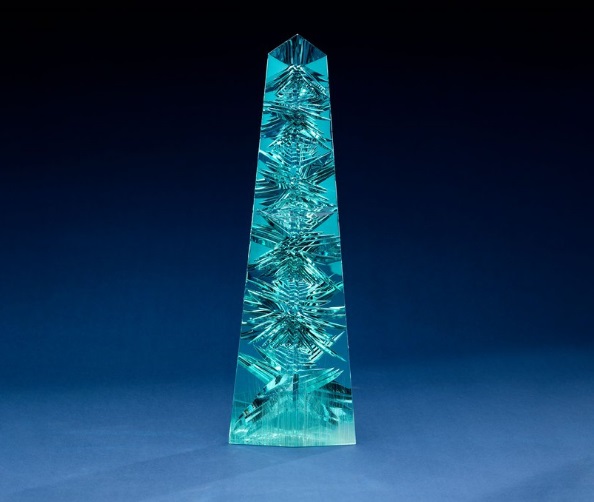
Another famous aquamarine, the Dom Pedro aquamarine, was cut from a 100-pound crystal that was mined in the late 1980s. It weighs around 4.6 pounds and is the world’s largest faceted aquamarine. It was cut into an obelisk standing 13.75 inches tall and weighing 10,363 carats. The obelisk was fashioned by acclaimed German lapidary Berndt Munsteiner using the fantasy cut technique.
ORIGIN
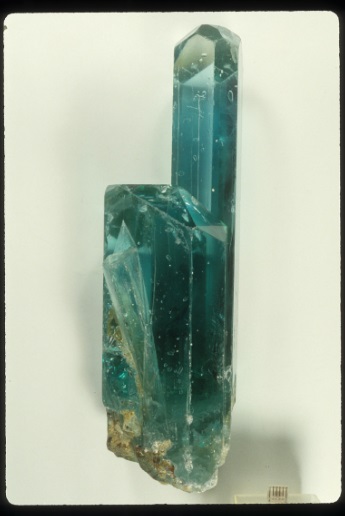
The Brazilian state of Minas Gerais has been an important source of aquamarine for the past two centuries among the panoramic rocky hills, rivers and scrub brush that dominate the central and eastern regions. Aquamarines are found in primary (hard rock) and secondary (weathered) pegmatite deposits in the eastern portion of the state, near the gem center of Teófilo Otoni.
Aquamarine is also found high in the Karakorum foothills of Pakistan. Miners must climb steep paths to elevations of 9,800 to 13,000+ feet (3,000 to more than 4,000 meters) and work the sides of forbidding cliffs. Below this inhospitable rocky world lie fertile valleys, rushing rivers and small towns. Aquamarine from this area has been described as “water clear.”
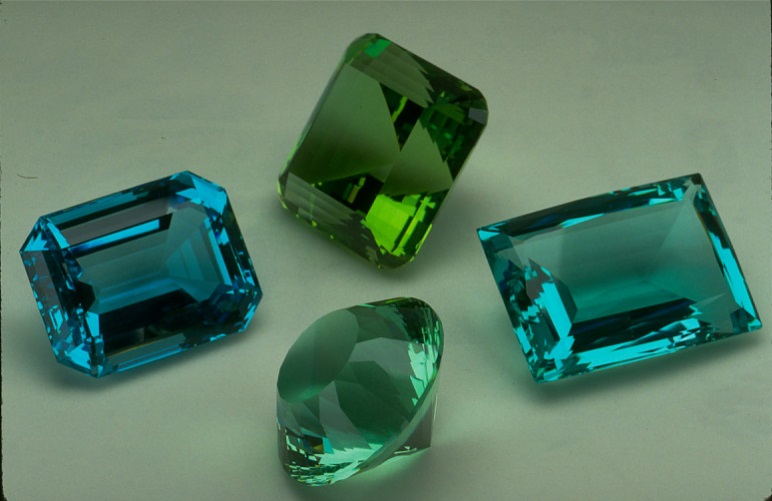
Aquamarine is a global resource and is also mined in Kenya, Madagascar, Nigeria, Zambia and Mozambique, as well as elsewhere in Africa. U.S. sources include the Mount Antero area of Colorado (it’s the state gem) and California’s Riverside and San Diego counties. In addition, aquamarine has been found in China, Myanmar, Russia and Ukraine, among other countries.
With a hardness of 7.5–8 on the Mohs scale, Aquamarine is durable enough for everyday wear. Use warm water, mild dish soap and a toothbrush to scrub behind the birthstone where dirt can collect. Ultrasonic cleaners and steam cleaning are usually safe options as long as there are no fractures or liquid inclusions in the gem.
Amethyst and Bloodstone are the March birthstones, and are also used to celebrate the 19th year of marriage.
Please visit the SFJS showroom to see our collection of aquamarine cabochons, faceted gemstones, and beads.

